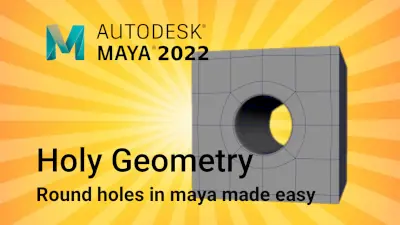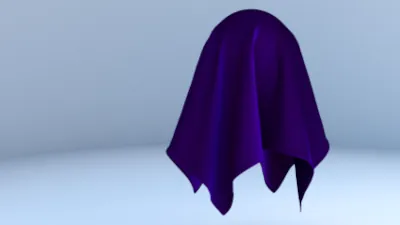Digital humans the art of the digital double
Ever wanted to know how digital doubles are created in the movie industry? This course will give you an insight into how it's done.
#
1
07-03-2012
, 03:29 AM
Just don't understand layers
I have an object in a layer and I create a new layer, I go back to the first layer and select that object and right mouse "remove selected". Then I go to the new layer and "add selected".
I toggle the new layer and see the object flick on and off, terrific, it must have moved into that layer.
But then if I toggle the first layer off, the object disappears even though the new layer is meant to display it.
The membership box will show that the original layer still has some connection with the object.
Anyway it's all Topsy-turvy and seems to run on some kind of negative-land logic that I can't fathom.
Can anyone point me to a clear explanation, tutorial or advise me to the correct process?
#
2
07-03-2012
, 04:25 AM
EduSciVis-er
Join Date: Dec 2005
Join Date: Dec 2005
Location: Toronto
Posts: 3,374
#
3
07-03-2012
, 06:28 AM
Lets start with groups. If I have a group and place it in a layer then turn of the layers visibility everything in the group vanishes. You can also put each individual object in the group in its own layer and as long as the group layer is visible you can turn off the visibility for each objects layer independently. So each object can be in more then one layer and hierarchy affects the layer behavior.
Parenting works the same way, except if you parent object A to object B and you have a layer that only contains object B. Making B not visible will make A not visible even though it seems that it is not explicitly in the same layer with B.
Put more simply if you hide visibility of a parent or a groups layer, you hide visibility of every child of the parent or the group regardless if they were explicitly put in the layer or not.
Try this to see it in your own mind it should help.
1. Create a sphere and put it in layer 1
2. Create a cube and put it in layer 2
3. now group them and place the group node in layer 3
now turn off visibility of layer one or two and the cube or the sphere are no loner visible. So you can control their visibility independently.
now turn layer 1 and 2 visibility on and turn layer 3 visibility off and both cube and sphere are no longer visible. but if you look at the membership in the channel box only the group node is a member.
--------------------------------------------
try the same experiment with parenting...
do steps 1 and 2 above, but now parent cube to sphere.
Now you will have 2 layers one that says membership is the sphere and the other says membership is the cube.
You can toggle the visibility of the cube layer and just the cube is affected. But try to toggle the visibility of the sphere layer and both the sphere and its child, the cube, are affected even though the cube does not show up as a member of the layer in the channel box.
"If I have seen further it is by standing on the shoulders of giants." Sir Isaac Newton, 1675
Last edited by ctbram; 07-03-2012 at 06:33 AM.
#
4
07-03-2012
, 07:46 AM
Here is another question, if I have an object and I select some polygons on it and I want to copy those polygons and paste then into another new layer. what is the best way to go about it? That's the kind of thing I would do a lot of when modelling.
#
5
07-03-2012
, 08:04 AM
polygons, edges, and verts are component level and they cannot be saved into layers in maya. Only object level items can be placed into layers.
You can however, make component level selection groups to help you quickly select groups of faces. Look at create>select>quick select set. You can also extract and duplicate faces and then place the resulting objects into layers.
I have done a little bit of work in both max and modo. max and maya are very similar in the way layers work. Modo which from what I can tell was based on lightwave has a very different way of handling object and component level items and a more photoshop like concept for layers which can hold objects and well as component level items.
Having run through a couple tutorials in modo I can say that adjusting to the differences in the layer system can be one of the most challenging things to adjust too. It took me quite a while to wrap my head around modo / lightwave layers coming from maya and max. But once you get a handle on the two systems, learning the modeling tools themselves and the workflows is not that bad.
don't feel to bad, when I was learning the other direction going to modo from maya, the modo layer system nearly made me insane. I would put things into layers and then could not figure out how to get them out or isolate them.
"If I have seen further it is by standing on the shoulders of giants." Sir Isaac Newton, 1675
Last edited by ctbram; 07-03-2012 at 08:12 AM.
#
6
08-03-2012
, 05:02 AM
#
7
08-03-2012
, 09:49 AM
It seems like a lot of steps to copy and cut some polygons from an object, so I'm assuming there is a quicker way.
#
8
08-03-2012
, 11:28 AM
"If I have seen further it is by standing on the shoulders of giants." Sir Isaac Newton, 1675
#
9
08-03-2012
, 12:06 PM
I just discovered that if you duplicate a group in the outliner, the duplicated group is automatically added to what ever layer is currently selected. That's quite handy, I can create an empty layer and when I duplicate, the new group is automatically in there.
Yes I will try to find a good total workflow tutorial, there's probably some in Simply Maya I should look at.
Posting Rules Forum Rules
Topics
Free Courses
Full Courses
VFX News
How computer animation was used 30 years ago to make a Roger Rabbit short
On 2022-07-18 14:30:13
Sneak peek at Houdini 19.5
On 2022-07-18 14:17:59
VFX Breakdown The Man Who Fell To Earth
On 2022-07-15 13:14:36
Resident Evil - Teaser Trailer
On 2022-05-13 13:52:25
New cloud modeling nodes for Bifrost
On 2022-05-02 20:24:13
MPC Showreel 2022
On 2022-04-13 16:02:13









